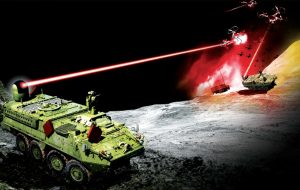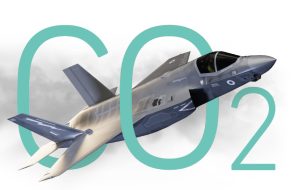The relationship between the technological and military sectors is profound in many countries, in the United States for instance, this relationship has been established through collaboration between the U.S. Army and private defence companies like Lockheed Martin, Boeing, General Dynamics, and Raytheon, which provide various advanced weapons and technologically advanced systems used by the U.S. military. Recently, it has become clear to the United States that there are thousands of other technology companies, ranging from large to very small, with substantial ideas and capabilities that could contribute to providing technologies that enhance the defence of the United States. This trend is also evident in many other countries, including Russia and Israel.

Many countries are now relying on innovations from the private sector, particularly startups, to develop technologically more efficient products for the battlefield. This can be detailed as follows:
Washington’s Reliance on Startups to Develop Artificial Intelligence:
The United States has utilized numerous artificial intelligence algorithms produced by companies such as “Primer”. This American company offers artificial intelligence services to intelligence analysts, managing to automatically record, transcribe, translate, and analyze conversations conducted by Russian military personnel over unencrypted channels.
Companies marketing military artificial intelligence products make bold claims about their product capabilities, suggesting they can aid in satellite data analysis, identify patterns in data to enable soldiers to act more rapidly on the battlefield and assist in target identification through image recognition software, and other capabilities. As a result, on June 30, 2022, NATO established a $1 billion innovation fund, aimed at investing in startup and private companies working on “priority” technologies for the alliance, such as automation, big data processing, and artificial intelligence. Various tech startups have sought to capitalize on the Russian-Ukrainian conflict to market their innovative products with military applications. For instance, “Capella Space,” a startup company based in San Francisco, is constructing a fleet of low-cost small satellites, which, unlike traditional satellites, can track enemy forces’ movement at night or under cloud cover. On the other hand, “Fortem Technologies,” a small aviation firm based in Utah, aims to supply the Pentagon with a new type of drone capable of disabling enemy drones.
Russian Startups Develop Cheaper Drones:
It was evident at the outset of the Russian-Ukrainian conflict that Moscow hadn’t invested adequately in developing drones. However, starting from the beginning of 2023, Russia managed to partially overcome this issue through the “Lancet” drone, developed by the Kalashnikov Group, a Russian government-owned military company.
This Russian drone successfully destroyed a significant number of Western armoured vehicles, including Bradley armoured vehicles and German Leopard tanks.
Despite this success, some point out that the production cost of the “Lancet” drone is high. As a result, some private companies have begun to develop new drones such as the “Privet-82,” produced by “Oko”, a startup in the field of information technology, headquartered in St. Petersburg, Russia and specialising in producing low-cost military drones.
”Privet-82” is a direct competitor to the “Lancet 3” drone. It uses an electric engine, has a flight range of up to twenty miles, can carry a warhead weighing 12 lbs and has a speed of 55 to 100 miles per hour. The new drone shares many advantages with “Lancet,” particularly its ability to resist jamming. It employs a combination of satellite navigation and remote control by a pilot in a control room.
In the final stage of an attack, the “Privet-82” uses computer vision to automatically identify targets. The company is capable of producing up to one hundred drones per month, exceeding the number of “Lancet” drones that can be produced.
Some Western defence analysts note that Russia benefits from its ongoing conflict in Ukraine, rapidly learning from its mistakes and swiftly introducing new technologies. Undoubtedly, startups will play a significant role in introducing these types of technologies, especially if they manage to deliver new weapons to the Russian military that prove their efficiency on the battlefield.

Israel’s Institutionalized Collaboration with Startups:
The Israeli army aims to leverage technologies developed by startups, especially those with potential military applications.
Thus the Research and Development Division at the Israeli Ministry of Defence initiated a program called “InnoFense” in 2019, with the aim of serving as an innovation hub that assists partner startups with funding.
The program reaches out to these companies and provides funding of $50,000 for around 4 months, to develop an innovative and applicable technological model. If a startup successfully surpasses this stage, it progresses to the second stage, qualifying for a purchase contract for its product, project development funding, or financing from major military companies working with the Israeli army, similar to the three major companies: Elbit, Rafael, and Israel Aerospace Industries (IAI).
For example, Israel Aerospace Industries selected five startup companies to collaborate with its engineers and experts in creating products for the company, including sensor devices, artificial intelligence systems, and more.
Factors Driving the Adoption of Startup Technologies:
Several significant factors have driven governments worldwide to rely on startup technologies. These can be detailed as follows:
Shift in International Security Environment: The international security environment increasingly relies on innovations developed by academic institutions, the technology sector, and military research. These entities offer innovative ideas, cost-effective weapons, and dual-use technologies that directly impact international security.
Innovations and dual-use technologies are now being employed by hostile states and non-state armed groups alike to undermine stability and peace. For instance, terrorist groups have employed drones to threaten critical infrastructure. Faced with these new technological challenges, governments need to quickly develop innovative ideas, a role that startups can contribute to.
Change in the Innovation Landscape: National armies were undeniably the leaders in technological innovation throughout most of the 20th century.
Technologies developed in defence laboratories often found their way into civilian sectors. Examples include the Internet, developed in 1969 by scientists working for the U.S. Department of Defence to create a decentralized communication network connecting universities, government agencies, and defence contractors.
Originally targeted for defence communication, the Internet began civilian use in the early 1990s.
Moreover, global satellite navigation systems, initially developed by the U.S. Department of Defence in the 1970s using the Global Positioning System (GPS), now assist navigation from point to point. Limited civilian use of GPS started in 1983 before being expanded by 1993.
However, in the 1990s, due to significant reductions in defence budgets, the budget allocated for research and development in civilian sectors became four times larger than the military equivalent.
Consequently, civilian companies became the primary drivers of innovation globally. As a result, the defence sector adopted a flexible approach that leveraged new technologies developed in the civilian sector.
Major technology companies in Silicon Valley, such as Intel, Google, Planet, and i3, began working in defence. Intel acquired Ascending Technologies, a company developing artificial intelligence for drones; Movidius, a company developing chips for drones; and MAVinci GmBH, a company developing flight path planning software for these types of drones.
Thus, cooperative relationships between the U.S. Department of Defence and these companies became natural, especially if the latter could develop successful technological products with defence applications that could be marketed to the U.S. military.

Therefore, the pursuit of defence ministries around the world to develop relationships with startup companies is entirely logical, especially since these startups are a major force in developing disruptive technologies, which are the technologies that challenge prevailing concepts in military fields and drive changes in thinking and operational mechanisms in an effort to maintain a military advantage in the future against adversaries.
Thus, defence ministries strive to develop disruptive technologies that enable military superiority, possessing a new generation of weapons that could reduce the relevance of older armaments and open doors to new weaponry. One of the prime examples of this is drones, with most world armies expanding their development of advanced and diverse drone generations.
Return of Great Power Conflicts: The resurgence of conflicts between major powers in the international system, specifically between Russia and the United States regarding Ukraine, or between Washington and Beijing over Taiwan, has led to increased military spending and a search for technological innovations.
These innovations contribute to addressing current shortcomings in military performance during combat and developing innovative technological solutions for challenges faced by armed forces on the battlefield. Indicators of this include U.S. investors approving more than 200 defence deals in the first five months of 2023, totalling around $17 billion, surpassing the entire funds raised by this sector in 2019.
Investments directed towards emerging defence companies grew from just under $16 billion in 2019 to around $33 billion in 2022. Given the anticipated increase in the U.S. military budget to around $886 billion by 2024, emerging companies are expected to secure a significant portion of this budget. This encouraged major U.S. technology companies to allocate part of their investments to acquire emerging defence companies.
Companies like Andreessen Horowitz and Sequoia Capital have begun investing in companies manufacturing defence products, introducing “kinetic” weapons systems for the first time.
Dual-Use Technology: Many technological applications are now dual-use, and the Russian-Ukrainian conflict underscores this fact. For example, the U.S. company SpaceX provided internet communication services to the Ukrainian army, successfully bypassing Russian interference. Additionally, Hawk Eye 360 supplied radar imaging services to the Ukrainian military through satellites to detect the movements of Russian military convoys.
Current Challenges: Despite the significant opportunities offered by startup companies to defence ministries in various countries, it’s evident that they still face immense challenges. These challenges can be detailed as follows:
“Valley of Death” Challenge: In military contexts, this term refers to two main meanings. First, it signifies the financial resource depletion a company experiences during the development of its initial prototype due to its failure to secure a contract with the government for purchasing its product.
This ultimately leads to the company’s bankruptcy and exit from the market, primarily affecting resource-constrained startup companies. The term also refers to a second meaning, which is the failure of defence companies to transition from initial prototypes to final products due to the bureaucratic processes of the U.S. Department of Defence.
The DoD often requires a significant amount of time to test initial prototypes and ensure their suitability for combat use. This challenge can result in significant losses for startups, forcing some of them to exit the market.
Critique of Defence Privatization: Criticism has been mounting within the United States from certain circles, arguing that excessive privatization of arms companies, particularly in the aftermath of the Cold War, has led to a decline in the production of certain American weapons, such as ammunition and others, which are crucial for supporting the Ukrainian army in its war against Russia. In the early 1940s, the United States held nearly 90% of the production capacity for aircraft, ships, artillery, and ammunition, which contrasts with the current situation. More than 88% of the Pentagon’s new procurement contracts have been awarded to the private sector since 2011. Furthermore, over $6 billion of private capital is annually invested in the defence industry.
According to this viewpoint, the United States lacks the necessary workforce to produce enough weaponry to support Ukraine. The U.S. was unable to provide Ukraine with the number of “Javelin” missiles it requested after depleting its stockpiles that were supposed to last for five years in the first six months of the war. It also consumed a supply intended for six years of “Stinger” missiles within just ten months.
Furthermore, when one of the few U.S. military contractor-owned factories, producing black powder for artillery shells, exploded in 2021, it wasn’t rebuilt due to projected unprofitability. It’s also expected that disruptions in global supply chains will impact the defence industry in the foreseeable future. Despite an anticipated increase in sales and profit margins, production delays, supply disruptions, and actual production costs exceeding initial estimates are likely to affect the capability of private U.S. defence industries to produce required weaponry.
According to this perspective, the United States should increase its intervention in the military production process, potentially by acquiring some defence companies. This would facilitate the production of unprofitable weapon types, enabling Washington to restore some types of weapons’ inventories to their normal levels, which have been depleted due to supplying Ukraine. The U.S. might adopt this approach, which would in turn impact emerging technology companies, as a significant portion of defence spending could be directed toward government military production or acquiring shares of private defence companies.
Conclusion
Despite the immense challenges facing startup companies worldwide, particularly regarding their ability to provide innovative technology that can be successfully applied by various armies, these startups will remain an integral part of the defence landscape in most countries. This is due to their capacity to deliver advanced technologies that can contribute to the development of disruptive technology capable of achieving a military edge over adversaries.
By: Dr. Shadi Abdelwahab Military and Strategic Researcher













